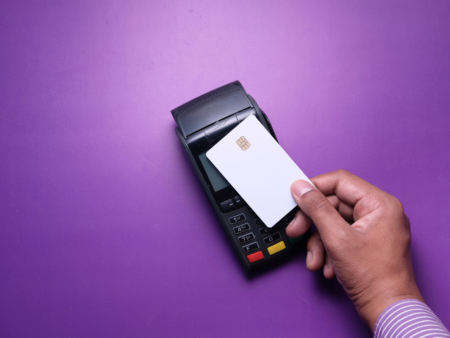Discover how anomaly detection methods fortify e-commerce platforms against fraud, safeguarding consumers and enterprises from online threats.
Global consumer convenience and technology have improved thanks to e-commerce. An issue with e-commerce is fraud. Platforms and merchants combat fraud to safeguard their clientele and enterprises. A significant method for spotting odd trends and possible fraud is anomaly detection. This article addresses various methods for putting anomaly detection to work in e-commerce fraud detection and examines its application in this regard.
It is the duty of e-commerce businesses to safeguard their clients against fraudulent conduct by fortifying their platforms. Cybercriminals threaten consumers and businesses by taking advantage of online weaknesses.
What is fraud in e-commerce?
Online deception including information theft, unauthorized purchases, or misleading claims is known as e-commerce fraud. The offenders concentrate their efforts on customers, payment processors, and internet retailers, which results in monetary losses, damage to the afflicted companies’ reputations, and a decline in public confidence.

Types of fraud in e-commerce
Online fraud can take many different forms, depending on the tactics used by the offenders to target users and organizations.
The most popular types are as follows:
- Identity theft: Identity theft is the process by which thieves steal personal information and use it to make fraudulent internet purchases that cost victims money.
- Fraud involving credit cards: Fraudsters utilize stolen credit card information to carry out illegal transactions, which costs money to both the victims’ businesses and the cardholders themselves.
- Chargeback fraud: When consumers contest the validity of their transactions, they file fraudulent chargebacks, which causes financial damage to companies.
- Cybercriminals utilize social engineering and phishing to deceive victims into divulging personal information or to perpetrate fraud.
- Account takeover fraud: This type of fraud involves gaining access to a victim’s account and committing fraud using that access. Unauthorized users can steal personal data or commit fraud by gaining access to a victim’s account.
- Refund fraud is the practice of making fraudulent statements about the non-receipt or damage of products in order to get unjustifiable refunds or replacements.
- Affiliate fraud: When unscrupulous affiliates try to rig compensation schemes by creating fake leads, sales, or clicks, they are committing fraud. This allows them to get paid money they are not supposed to.
- Products that are counterfeit: Vendors defraud buyers by offering phony or subpar goods, damaging brands.
- Fraudulent dropshippers either use credit cards that they have stolen to purchase goods and ship them to victims, or they accept money and never deliver the merchandise.
One of the biggest issues with digital transactions and online shopping is e-commerce fraud. Enterprises bear an obligation to safeguard both themselves and their clientele against fraudulent activities by allocating resources towards security measures, fraud detection software, and employee education. E-commerce fraud categories differ as much as business techniques.
Knowing what anomaly detection is
Finding patterns or data points that differ from the majority is the goal of anomaly detection. Anomalies in e-commerce can include odd transaction amounts, strange buying patterns, or questionable account activity. Finding abnormalities is crucial since they may point to fraud, such as credit card or identity theft.
Anomaly detection is integrated with e-commerce fraud detection
In order to detect fraud in e-commerce, anomaly detection is crucial. Integration enhances the ability to identify and address questionable activity. When detecting fraud in e-commerce, anomaly detection is employed.
Alerts and monitoring in real time
Real-time tracking of user activity and e-commerce transactions is done using anomaly detection. Unusual patterns set out signals that need further research. With this strategy, fraud is stopped before it can do any harm. Systems for detecting abnormalities can identify suspicious transactions right away, enabling companies to stop fraud and improve their digital marketing tactics.
Recognizing unidentified risks
New trends or fraud that rule-based systems miss are discovered through anomaly detection. In order to improve fraud detection, anomaly detection algorithms examine data, learn from it, and adjust to new fraudulent strategies.
Diminished false positive rates
Fraud detection false positives are decreased using anomaly detection. Transaction interruptions are minimized since the system can distinguish between suspicious activity and normal consumer behavior by spotting anomalies.
Analysis of behavior
Using profile creation and an understanding of typical patterns, anomaly detection examines user behavior. Any divergence is worth looking into. This method works well for identifying account takeovers when there is a significant shift in the user’s behavior.
The prevention and detection of e-commerce fraud
Companies employ strategies for preventing, detecting, and responding to e-commerce fraud in order to safeguard their clients and brand from harm. Here are a few techniques:
1. Factor authentication in multiples (MFA)
When signing in or completing a critical transaction, users must authenticate their identity using two different forms of identification, a security measure known as multi-factor authentication (sometimes called 2FA or two-step verification). Multi-factor authentication, or MFA, strengthens security by making it much harder for hackers to access accounts or systems, even in the event that they manage to steal one form of identity.
The three main categories into which authentication factors can be categorized are as follows:
- An insight you possess: comprises PINs, passwords, or security questions to confirm a person’s identification.
- One item you possess: Examples include smart cards, hardware tokens, and cellphones loaded with authentication programs.
- A trait you possess: This covers distinct human identifiers such as voice patterns, facial recognition, and fingerprints.
There are two prerequisites for MFA. A password and a one-time code obtained from a mobile authenticator app are entered by users. It gets harder since attackers have to compromise more authentication factors in order to get illegal access.
2. Artificial intelligence and machine learning
E-commerce fraud is prevented and detected using ML and AI through data analysis, pattern recognition, and trend adaptation. These technologies increase the efficiency and accuracy of fraud detection, reducing the need for manual inspection and rule-based systems.
The following are some methods for preventing and detecting e-commerce fraud using ML and AI:
- ML algorithms are used for the detection of anomalies in transactional data. Mark abnormalities for further examination.
- Risk scoring: Transaction risk is calculated by artificial intelligence (AI) systems using device information, user behavior, geolocation, and transaction history. High-risk transactions may require human scrutiny or further authentication.
- Predictive analytics: This technique helps firms lower risks by predicting fraud by utilizing past data.
- Behavior analysis: Artificial intelligence (AI) systems are able to examine user behavior to spot efforts to take over an account or engage in fraudulent conduct.
- Real-time monitoring is made feasible by machine learning and artificial intelligence, which enables prompt threat identification and reaction.
- Artificial intelligence and machine learning can adapt to fraudsters’ new methods. Constant learning maintains fraud detection systems’ effectiveness.
- Cut down on false positives: Reducing false positives Traditional fraud detection methods generate many false positives, which annoys customers and costs organizations sales. Fraud detection is more accurate with ML and AI because they consider more variables and respond to new information.
eCommerce sites and fraudulent transactions
Large transaction data analysis is hard. Machine learning helps fraud managers investigate why some transactions were not flagged as fraudulent. Juniper Research predicts internet merchant fraud would cost $50.5 billion by 2024.
You may find out which products are being targeted by scammers, what shipping details to be wary of, and which card payments to refuse in order to reduce chargeback rates by running your machine learning system.
Principles of anomaly detection
Solid methods are needed for anomaly detection to be effective. Typical methods for detecting fraud in e-commerce:
Statistical techniques – Math and statistics are used in statistical methods to model behavior and identify deviations. The Gaussian distribution, clustering techniques, and Z-score are some of the methods.
Machine learning – Techniques for machine learning are effective instruments for anomaly detection. Data is used to teach algorithms how to find trends and abnormalities.
Unsupervised education – Anomalies are found using unsupervised learning algorithms in the absence of labeled data. They use normal data as a starting point to find outliers.
Hybrid methods – Hybrid approaches integrate several techniques, frequently with the use of machine learning and statistics. This technique combines several strategies to increase the accuracy of anomaly detection.
In the end
Finally keeping one step ahead of fraudsters is a constant problem in the dynamic world of digital marketing and the ever-evolving landscape of trillion-dollar e-commerce. Finding anomalies is essential to detecting e-commerce fraud. It is crucial for fraud detection due to its flexibility and real-time insights. E-commerce platforms that use anomaly detection and important techniques can increase safety and avoid fraud.
AI fraud detection helps e-commerce companies avoid fraud. AI systems examine data to identify fraud, which helps organizations by cutting costs, increasing productivity, and boosting client confidence. Due to problems with data quality, false positives, model bias, technological know-how, and adversarial attacks, implementing these systems can be difficult. Companies that solve obstacles and collaborate with seasoned experts can deploy AI-based fraud detection and prevention solutions.











